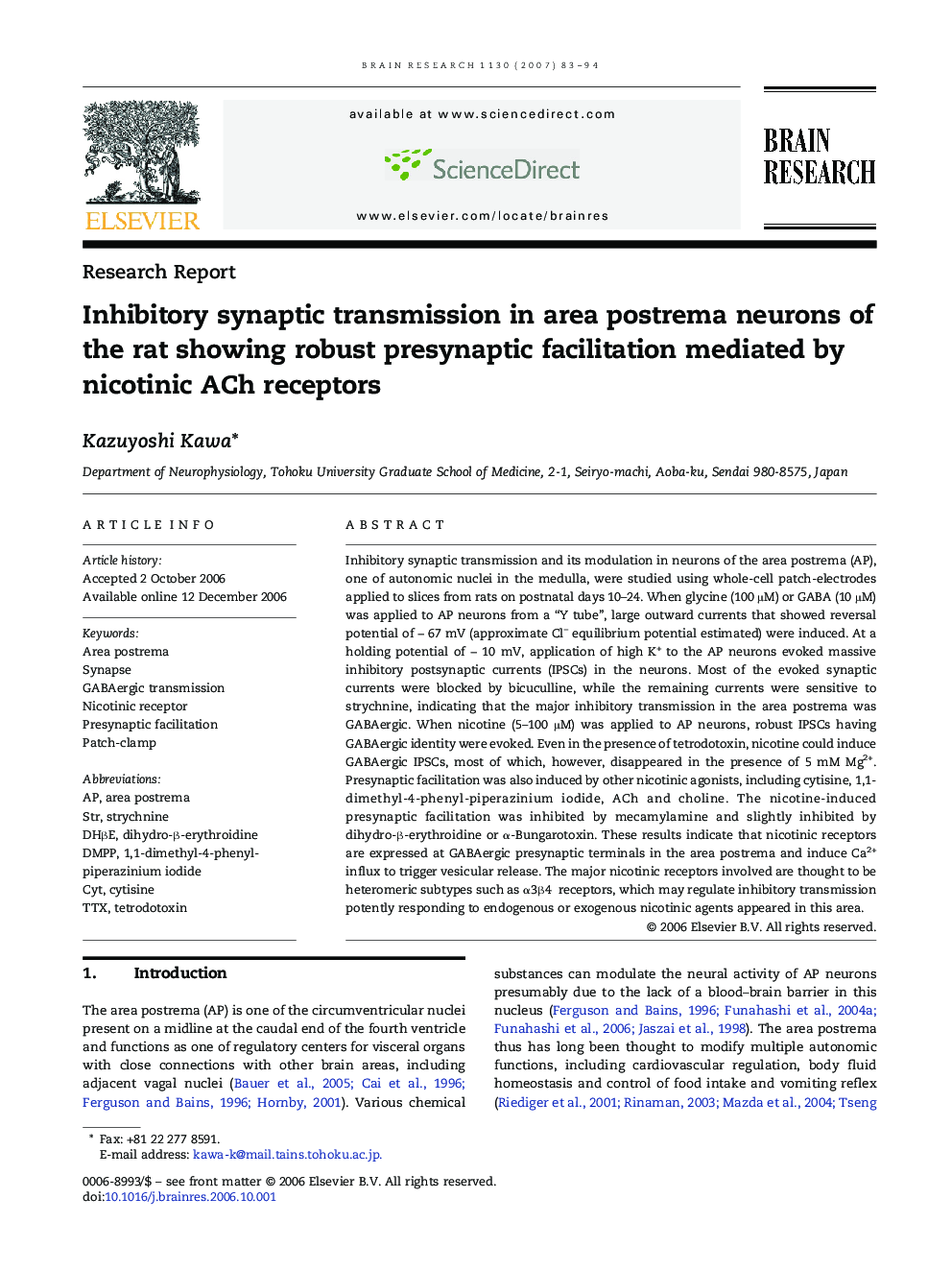| Article ID | Journal | Published Year | Pages | File Type |
|---|---|---|---|---|
| 4331675 | Brain Research | 2007 | 12 Pages |
Inhibitory synaptic transmission and its modulation in neurons of the area postrema (AP), one of autonomic nuclei in the medulla, were studied using whole-cell patch-electrodes applied to slices from rats on postnatal days 10–24. When glycine (100 μM) or GABA (10 μM) was applied to AP neurons from a “Y tube”, large outward currents that showed reversal potential of − 67 mV (approximate Cl− equilibrium potential estimated) were induced. At a holding potential of − 10 mV, application of high K+ to the AP neurons evoked massive inhibitory postsynaptic currents (IPSCs) in the neurons. Most of the evoked synaptic currents were blocked by bicuculline, while the remaining currents were sensitive to strychnine, indicating that the major inhibitory transmission in the area postrema was GABAergic. When nicotine (5–100 μM) was applied to AP neurons, robust IPSCs having GABAergic identity were evoked. Even in the presence of tetrodotoxin, nicotine could induce GABAergic IPSCs, most of which, however, disappeared in the presence of 5 mM Mg2+. Presynaptic facilitation was also induced by other nicotinic agonists, including cytisine, 1,1-dimethyl-4-phenyl-piperazinium iodide, ACh and choline. The nicotine-induced presynaptic facilitation was inhibited by mecamylamine and slightly inhibited by dihydro-β-erythroidine or α-Bungarotoxin. These results indicate that nicotinic receptors are expressed at GABAergic presynaptic terminals in the area postrema and induce Ca2+ influx to trigger vesicular release. The major nicotinic receptors involved are thought to be heteromeric subtypes such as α3β4 receptors, which may regulate inhibitory transmission potently responding to endogenous or exogenous nicotinic agents appeared in this area.
